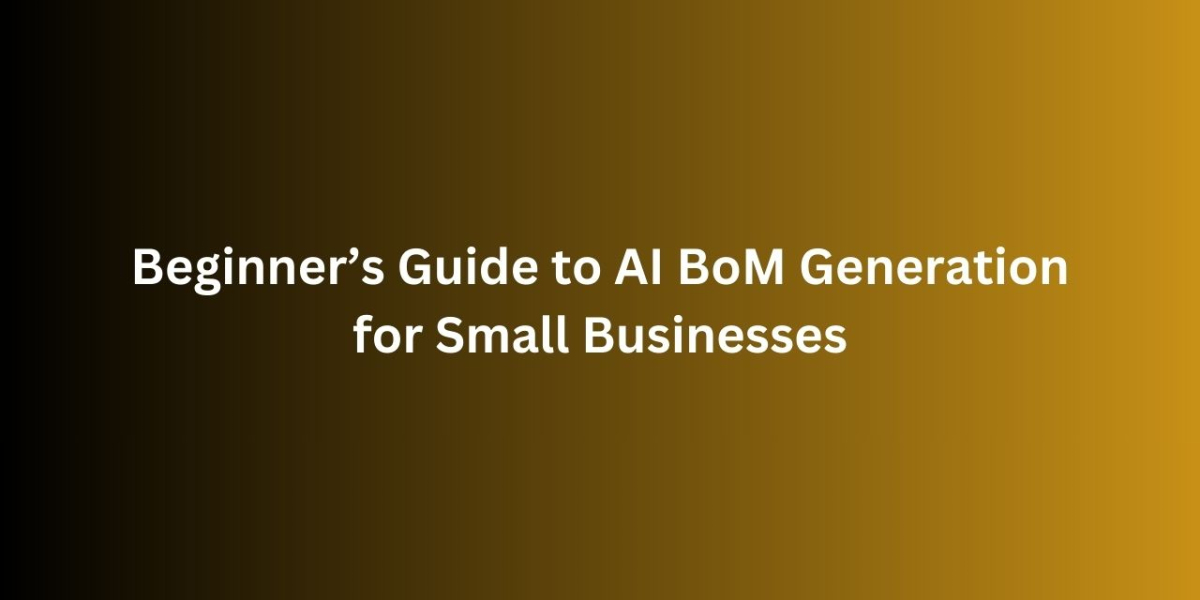XTEN-AV has always been at the forefront of helping businesses adopt cutting-edge technologies to improve efficiency and productivity. One of the most transformative tools for small businesses today is AI BoM Generation. As companies look to streamline operations, reduce errors, and save time, understanding how AI-driven Bills of Materials work can be a game changer. This beginner’s guide explores AI BoM Generation, its benefits, and how small businesses can leverage it effectively.
What Is a Bill of Materials
Before diving into AI, it is essential to understand what a Bill of Materials, or BoM, is. A BoM is a comprehensive list of all components, parts, and materials needed to produce a product or complete a project. For small businesses, especially those in manufacturing, electronics, or AV design, having an accurate BoM is critical. Errors in BoM creation can lead to production delays, increased costs, or wasted resources.
Traditionally, BoMs are created manually by engineers or project managers. This process involves reviewing designs, listing components, verifying quantities, and cross-checking with suppliers. While manual methods can work for simple projects, they become time-consuming and error-prone as projects grow in complexity.
The Role of AI BoM Generation
AI BoM Generation uses artificial intelligence to automate the creation of Bills of Materials. By analyzing design files, historical data, and supplier information, AI systems can generate accurate BoMs quickly and efficiently. This automation reduces the time spent on repetitive tasks and allows small business teams to focus on more strategic work.
For small businesses, AI BoM Generation offers several advantages. It minimizes human errors, ensures that components are specified correctly, and suggests alternatives when parts are unavailable. Additionally, AI tools can integrate with procurement and inventory management systems, making it easier to manage orders and reduce delays.
Key Benefits for Small Businesses
Time Savings
Manual BoM creation can take hours or even days for complex projects. AI BoM Generation completes the task in minutes, freeing up staff to work on product development, customer support, or business strategy.Error Reduction
Small businesses often cannot afford costly mistakes. AI systems automatically check for inconsistencies, incorrect quantities, or outdated part numbers, reducing the risk of errors.Cost Efficiency
By generating accurate BoMs and suggesting optimal alternatives, AI tools help small businesses avoid over-ordering or purchasing expensive components unnecessarily. This leads to better budget management and cost savings.Scalability
As businesses grow, projects become more complex. AI BoM Generation scales with your needs, handling large projects without additional manual effort.Integration and Automation
Modern AI BoM tools integrate with project management, procurement, and inventory systems. This creates a seamless workflow from design to production, reducing manual entry and improving collaboration.
Getting Started with AI BoM Generation
Small businesses new to AI BoM Generation can follow a few steps to ensure a smooth adoption:
Evaluate Your Needs
Identify the type of projects that would benefit most from AI BoM Generation. Consider factors such as project size, complexity, and the number of components involved.Choose the Right Tool
Select AI BoM Generation software that fits your business requirements. Look for features like integration with existing tools, supplier databases, and customizable BoM templates.Train Your Team
Although AI tools are intuitive, training staff on how to use them effectively is important. Provide guidance on uploading design files, reviewing generated BoMs, and making manual adjustments if needed.Start Small
Begin with a few projects to test the tool. Compare AI-generated BoMs with manually created ones to understand accuracy and reliability. This also helps the team become comfortable with the new workflow.Refine and Expand
Once the team gains confidence, expand AI BoM Generation to more projects. Continuously refine settings, update component databases, and integrate feedback to maximize efficiency.
Common Challenges and How to Overcome Them
Small businesses may face challenges when adopting AI BoM Generation, but these can be managed with proper planning:
Initial Investment: Some AI tools require subscription fees or upfront costs. Consider the long-term savings from reduced labor and errors when evaluating the investment.
Data Accuracy: AI depends on accurate design files and supplier data. Ensure your data is up to date to get the best results.
Human Oversight: While AI reduces errors, human review is still necessary for critical projects. Combining AI efficiency with expert judgment ensures optimal results.
Best Practices for Small Businesses
Keep Component Libraries Updated: Regularly update parts and supplier information to maintain accuracy.
Leverage Integration: Connect AI BoM Generation with inventory and procurement tools to streamline operations.
Maintain Clear Documentation: Document AI workflows and processes so all team members understand how to use the system effectively.
Monitor Performance: Periodically review AI-generated BoMs to track accuracy and make improvements where necessary.
Conclusion
AI BoM Generation represents a significant advancement for small businesses seeking efficiency, accuracy, and scalability in their operations. By automating the tedious task of creating Bills of Materials, small business teams can focus on innovation, product development, and growth.
XTEN-AV continues to lead the way in providing AI-driven solutions for the AV and engineering industries. For small businesses, adopting AI BoM Generation is not just a step toward modernizing workflows, but a strategic move to stay competitive in an increasingly complex and fast-paced market. With the right tools, training, and processes, small businesses can harness the power of AI to streamline operations, reduce errors, and save valuable time and resources.
Read more: https://zekond.com/read-blog/227727








